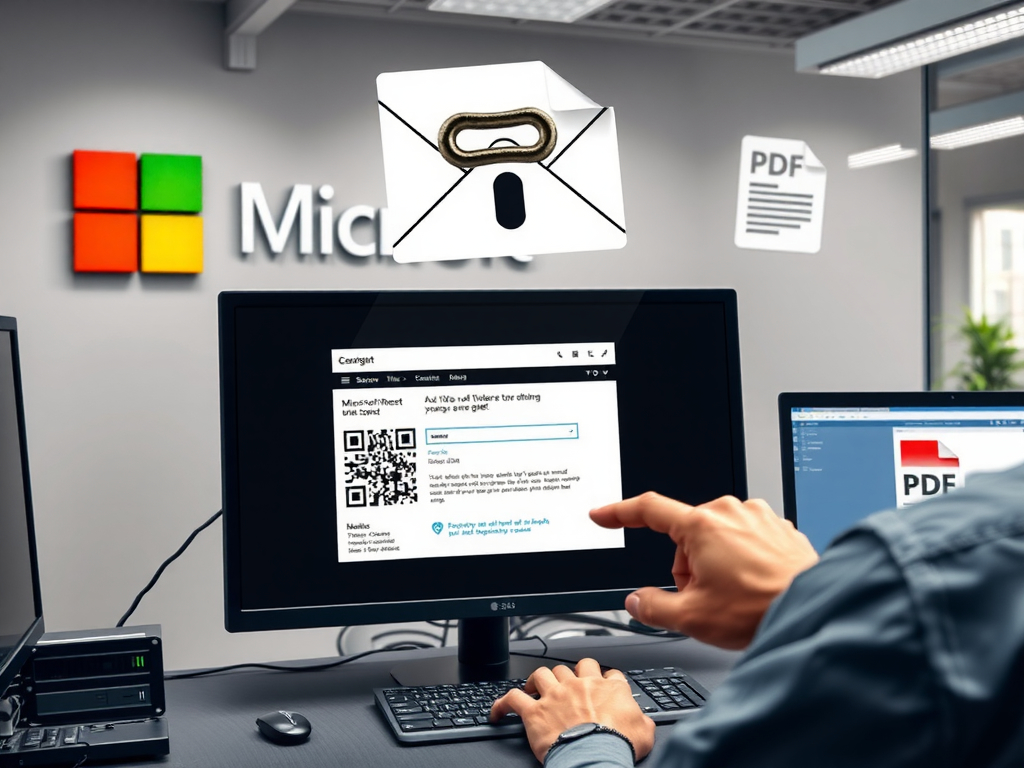Threat Report
MICROSOFT 365 DIRECT SEND ABUSE Threat actors are exploiting Microsoft 365's Direct Send feature to deliver phishing emails, bypassing perimeter security solutions.
Threat Overview
The threat report published by AlienVault on August 18, 2025, highlights a critical vulnerability in Microsoft 365’s Direct Send feature. Threat actors are actively exploiting this feature to deliver phishing emails, bypassing traditional perimeter security solutions. This technique does not require credentials; it only needs knowledge of the target domain and valid recipient addresses. The attack process involves identifying organizational domains, crafting emails that impersonate internal users, and delivering these malicious messages through Microsoft 365’s infrastructure.
Recent campaigns have successfully harvested credentials and established footholds within targeted environments. Attackers use automated tools to generate convincing business-themed lures, often utilizing PDF and DOCX attachments with QR codes or obfuscated HTML leading to phishing pages. The abuse of Direct Send represents a significant gap in email security defenses, particularly for organizations that rely heavily on email communications.
Detailed Analysis
The exploitation of Microsoft 365’s Direct Send feature allows threat actors to route malicious emails through trusted infrastructure, making it difficult for traditional security solutions to detect and block these threats. This method leverages the trust associated with Microsoft’s infrastructure, enabling attackers to bypass email filters and other perimeter defenses.
Threat actors identify organizational domains and craft phishing emails that appear to come from legitimate internal sources. These emails often contain attachments or links that lead to phishing pages designed to harvest credentials. The use of automated tools allows attackers to generate a large volume of convincing lures, increasing the likelihood of successful phishing attempts.
The abuse of Direct Send is particularly concerning for organizations that rely heavily on email communications. The trust associated with Microsoft’s infrastructure makes it easier for attackers to deceive employees and gain access to sensitive information. This technique represents a critical gap in email security defenses, highlighting the need for enhanced security measures.
Operational Security Measures
While the abuse of Direct Send is a sophisticated attack vector, there are several operational security measures that organizations can implement to mitigate this threat. These include:
- Email Filtering: Implement advanced email filtering solutions that can detect and block phishing emails, even those routed through trusted infrastructure.
- User Training: Provide regular security awareness training to employees, focusing on recognizing and reporting suspicious emails. This includes phishing simulations and best practices for email security.
- Multi-Factor Authentication (MFA): Enforce the use of MFA for all email accounts to add an extra layer of security, making it more difficult for attackers to gain access even if credentials are compromised.
- Monitoring and Logging: Implement robust monitoring and logging solutions to detect unusual email activity. This includes tracking email traffic patterns and identifying potential phishing attempts.
- Incident Response Plan: Develop and maintain an incident response plan that outlines steps for containing, investigating, and recovering from phishing attacks. This ensures a quick and effective response to security incidents.
Recommendations for Mitigation
To mitigate the risks associated with Microsoft 365 Direct Send abuse, organizations should consider the following recommendations:
- Enhanced Email Security: Deploy advanced email security solutions that can detect and block phishing emails routed through trusted infrastructure. This includes using machine learning algorithms to identify suspicious patterns.
- Regular Updates: Keep all systems and software up to date with the latest security patches. Regular updates help address known vulnerabilities that can be exploited by threat actors.
- Network Segmentation: Implement network segmentation to limit the lateral movement of attackers within the network. This can be achieved by dividing the network into smaller segments and implementing strict access controls between segments.
- Endpoint Protection: Deploy endpoint protection solutions to detect and block malware on individual devices. Endpoint protection can help prevent initial infections and limit the spread of malware within the network.
- Security Awareness Training: Provide regular security awareness training to employees, focusing on recognizing and reporting suspicious emails. This includes phishing simulations and best practices for email security.
- Regular Backups: Maintain regular backups of critical data to ensure that it can be restored in the event of a ransomware attack or data loss. Backups should be stored offline or in a separate network segment to prevent them from being encrypted or deleted by malware.
- Incident Response Plan: Develop and maintain an incident response plan to ensure that the organization can respond quickly and effectively to security incidents. The plan should include steps for containing the threat, investigating the incident, and restoring affected systems.
By implementing these measures, organizations can significantly reduce the risk of falling victim to phishing attacks leveraging Microsoft 365’s Direct Send feature.


